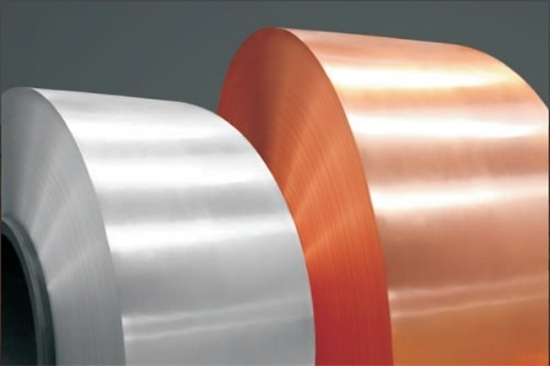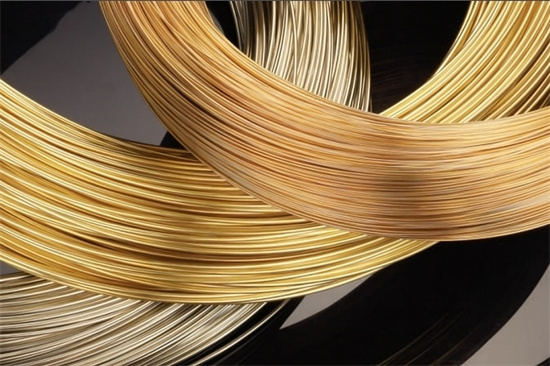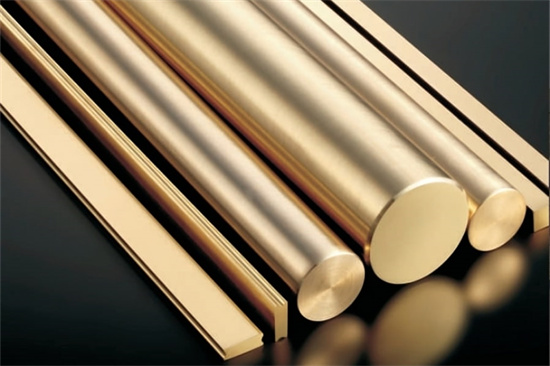


CuNi10Fe: Unveiling the Power of This Remarkable Alloy
Low MOQ
Provide low minimum order quantity to meet different needs.
OEM & ODM
Provide customized products and design services to meet unique customer needs.
Adequate Stock
Ensure fast order processing and provide reliable and efficient service.
Customer Satisfaction
Provide high quality products with customer satisfaction at the core.
share this article
Table of Contents
When it comes to selecting materials for harsh environments, especially those involving corrosive conditions, high temperatures, and seawater exposure, few materials perform as well as CuNi10Fe. This copper-nickel alloy enriched with iron is celebrated for its exceptional resistance to corrosion and outstanding mechanical properties. Whether you’re designing for marine applications, oil and gas industries, or chemical processing plants, CuNi10Fe is a top contender.
In this guide, we’ll dive deep into everything you need to know about CuNi10Fe, from its composition and properties to its applications and specifications. We’ll also explore the advantages and limitations of this alloy, provide insights into pricing, and answer common questions you may have about CuNi10Fe.
Overview
CuNi10Fe is a copper-nickel alloy with approximately 10% nickel and 1-2% iron. The addition of iron improves the alloy’s corrosion resistance in environments where seawater or brackish water is present, making it a popular choice for marine applications. Unlike pure copper, which can corrode quickly in saline environments, CuNi10Fe can withstand the rigors of both marine and industrial exposure.
Key Features :
- Corrosion Resistance: Excellent performance in seawater, brackish water, and acidic environments.
- Durability: High mechanical strength and fatigue resistance.
- Thermal Stability: Performs well at both low and high temperatures.
- Workability: Good formability, weldability, and machinability.
- Biofouling Resistance: Resists marine organism growth (e.g., barnacles, algae), reducing maintenance needs in marine environments.
Composition and Properties
The unique composition of CuNi10Fe gives it a balanced combination of corrosion resistance, strength, and thermal stability. Let’s look at the alloy’s chemical composition and key properties in more detail.
Composition
| Element | Percentage (%) |
|---|---|
| Copper (Cu) | 86 – 89 |
| Nickel (Ni) | 9 – 11 |
| Iron (Fe) | 1.5 – 2.5 |
| Manganese (Mn) | 0.5 – 1.0 |
| Other Elements | Trace amounts |
Mechanical and Physical Properties
| Property | Value |
|---|---|
| Tensile Strength | 360 – 450 MPa |
| Yield Strength | 120 – 160 MPa |
| Elongation | 30 – 40% |
| Density | 8.94 g/cm³ |
| Thermal Conductivity | 29 W/m·K |
| Electrical Resistivity | 0.25 µΩ·m |
| Melting Point | 1100 – 1140°C |
| Corrosion Resistance | Excellent against seawater, acids |
Key Insights on the Properties:
- Corrosion Resistance: The nickel and iron content significantly enhances CuNi10Fe’s ability to resist corrosion, especially in marine environments.
- Thermal Properties: The alloy maintains stability under a wide range of temperatures, making it ideal for high-temperature industrial processes like chemical processing or power generation.
- Mechanical Strength: CuNi10Fe offers a good combination of strength and ductility, making it easy to form and machine for various industrial applications.
Applications
CuNi10Fe’s excellent corrosion resistance, durability, and biofouling properties make it a go-to material in industries where seawater and corrosive environments are prevalent. Its ability to perform well under extreme conditions has made it a popular choice in marine engineering, power generation, desalination plants, and more.
Common Applications
| Industry | Typical Applications |
|---|---|
| Marine Engineering | Piping systems, heat exchangers, seawater condensers |
| Oil & Gas | Offshore platforms, risers, and subsea components |
| Power Generation | Cooling systems, turbine components, condensers |
| Desalination Plants | Evaporators, brine heaters, piping |
| Shipbuilding | Propellers, hull fittings, seawater intake systems |
| Chemical Processing | Heat exchangers, chemical storage, process piping |
Why CuNi10Fe Is Used in These Applications
- Marine Engineering: Its resistance to seawater corrosion makes CuNi10Fe perfect for seawater piping systems and heat exchangers.
- Oil & Gas: In offshore drilling platforms, CuNi10Fe withstands the harsh combination of saltwater, high pressure, and temperature variations.
- Desalination: In desalination plants, CuNi10Fe’s ability to resist brine corrosion ensures a long service life, reducing maintenance costs.
Specifications, Sizes, and Standards
CuNi10Fe is manufactured in various forms and sizes to meet the specific needs of different industries. Below, we’ll outline common specifications, sizes, and standards that apply to CuNi10Fe.
Specifications and Standards
| Specification | Details |
|---|---|
| Common Forms | Sheets, Plates, Rods, Tubes, Pipes |
| Diameter Range (Rods) | 6 mm to 250 mm |
| Thickness Range (Sheets) | 0.5 mm to 30 mm |
| Length (Bars) | Up to 6 meters |
| Standards | ASTM B111, ASTM B466, DIN 86019, EN 12449 |
Grades
| Grade | Attributes |
|---|---|
| CuNi10Fe-Soft | Better formability, good for bending and welding |
| CuNi10Fe-Hard | Improved strength, better for load-bearing applications |
Forms and Sizes Available
- Tubes: Frequently used for seawater cooling systems and heat exchangers in marine and industrial applications.
- Plates: Commonly utilized in offshore platforms and shipbuilding for structural components.
- Rods: Often used in precision machining, particularly in oil and gas sectors.
Suppliers and Pricing
The pricing of CuNi10Fe can fluctuate based on several factors, including the form (i.e., tubes, plates, rods), the supplier’s location, and market conditions (such as the cost of raw copper and nickel). Below, we’ll take a look at some common suppliers and pricing information for CuNi10Fe.
Suppliers and Pricing Information
| Supplier | Location | Price Range (per kg) | Typical Lead Time |
|---|---|---|---|
| Metal Supermarkets | USA | $15 – $30 | 2-4 weeks |
| Shanghai Metals | China | $12 – $28 | 3-5 weeks |
| Metals4U | UK | £12 – £25 | 1-3 weeks |
| EuroAlloys | Europe | €14 – €30 | 4-6 weeks |
Factors Influencing CuNi10Fe Pricing
- Form: Tubes and plates tend to be more expensive than rods due to the complexity of processing.
- Grade: Harder grades typically cost slightly more due to additional treatments that are required to achieve higher strength properties.
- Market Prices: The price of nickel and copper can vary, influencing the cost of CuNi10Fe.
Advantages and Limitations
Like any material, CuNi10Fe has its own set of advantages and limitations. Below, we’ll explore the key benefits and drawbacks of this high-performance alloy.
Advantages and Limitations
| Advantages | Limitations |
|---|---|
| Exceptional corrosion resistance | More expensive than standard copper or brass alloys |
| High mechanical strength | Lower electrical conductivity compared to pure copper |
| Good weldability and formability | Heavier than some alternative materials |
| Excellent biofouling resistance | Nickel content may raise cost and allergic reactions in some applications |
| Long service life in marine environments | Not ideal for applications requiring high conductivity |
Insights on the Benefits and Drawbacks
- Corrosion Resistance: CuNi10Fe is the go-to material for marine environments, where its resistance to seawater makes it indispensable. However, the alloy is more expensive than simpler copper alloys like brass or bronze, which may be a consideration if cost is a major factor.
- Mechanical Properties: Its combination of strength, ductility, and formability makes it suitable for heavy-duty applications like offshore platforms. However, its heavier weight compared to other materials like aluminum may not be ideal for applications where lightweight properties are essential.
CuNi10Fe vs. Other Copper Alloys
When selecting an alloy, you may wonder how CuNi10Fe compares to other copper-nickel and copper-based alloys. Let’s dive into a comparison between CuNi10Fe and some common alternatives like CuNi30, CuNi70/30, and CuZn39Pb3 (Brass).
Comparison of CuNi10Fe with Other Copper Alloys
| Property | CuNi10Fe | CuNi30 (70/30) | CuZn39Pb3 (Brass) | CuNi90/10 |
|---|---|---|---|---|
| Tensile Strength | 360 – 450 MPa | 490 – 680 MPa | 300 – 450 MPa | 350 – 400 MPa |
| Yield Strength | 120 – 160 MPa | 150 – 200 MPa | 150 – 300 MPa | 130 – 180 MPa |
| Corrosion Resistance | Excellent | Superior (especially in seawater) | Moderate | Very Good |
| Machinability | Good | Moderate | Very Good | Good |
| Electrical Conductivity | 10-30% IACS | 5-15% IACS | 28-35% IACS | 10-20% IACS |
Key Takeaways from the Comparison
- CuNi10Fe vs CuNi30: CuNi30 has better mechanical strength and corrosion resistance in extreme marine environments but is more expensive and harder to machine than CuNi10Fe.
- CuNi10Fe vs Brass (CuZn39Pb3): Brass offers better machinability and is usually cheaper, but its corrosion resistance in marine environments is significantly lower than CuNi10Fe.
- CuNi10Fe vs CuNi90/10: Both alloys have similar properties, but CuNi10Fe is typically more cost-effective and offers slightly better workability.
Frequently Asked Questions (FAQ)
To help you better understand CuNi10Fe, we’ve compiled a list of frequently asked questions to address common concerns and queries.
| Question | Answer |
|---|---|
| What is it used for? | It is primarily used in marine engineering, oil & gas, shipbuilding, and chemical processing due to its corrosion resistance and durability. |
| Does it corrode in seawater? | No, it has excellent corrosion resistance in seawater, making it ideal for marine applications. |
| Is it easy to machine? | Yes, it has good machinability, particularly in its soft grade, making it suitable for precision components. |
| How much does it cost? | The price typically ranges between $12 and $30 per kg, depending on the supplier and form (e.g., sheets, tubes, rods). |
| Can it be welded? | Yes, it offers excellent weldability, particularly in marine and industrial applications. |
| What are the main properties of it? | It is known for its corrosion resistance, mechanical strength, thermal stability, and biofouling resistance. |
Conclusion
It is a versatile copper-nickel alloy that excels in marine, industrial, and chemical processing applications. Its corrosion resistance and mechanical strength make it a top choice for seawater systems, while its thermal stability ensures it performs well in high-temperature environments. While it may come at a higher cost than simpler copper alloys, its long service life and outstanding performance in harsh conditions make it a worthwhile investment.
Whether you’re designing offshore platforms, ship components, or heat exchangers, It offers the durability and reliability you need. By understanding its properties, applications, and limitations, you can make an informed decision about whether it is the right material for your next project.
Maybe you want to know more about our products, please contact us
Get Latest Price
About Met3DP
Product Category
HOT SALE
CONTACT US
Any questions? Send us message now! We’ll serve your request with a whole team after receiving your message.

Metal Powders for 3D Printing and Additive Manufacturing
COMPANY
PRODUCT
cONTACT INFO
- Qingdao City, Shandong, China
- [email protected]
- [email protected]
- +86 19116340731








